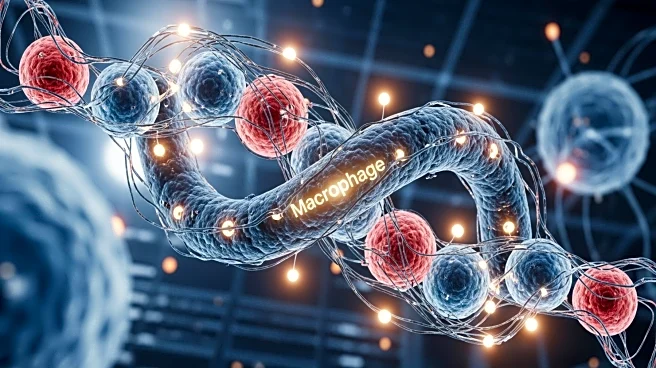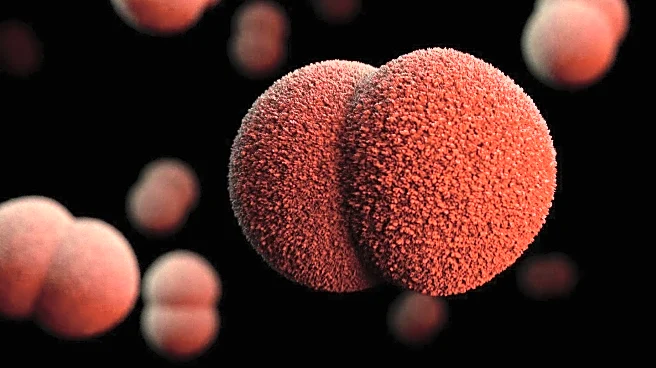What's Happening?
A study published in Nature has identified a Pak4-mediated interaction between necroptotic macrophages and tendon stem/progenitor cells (TSPCs) as a contributing factor to traumatic heterotopic ossification
(HO). The research utilized a murine model to simulate traumatic HO, revealing that Pak4 plays a crucial role in the crosstalk between these cell types. The study employed various techniques, including high-throughput sequencing and proteomics, to analyze the cellular and molecular changes during HO formation. The findings suggest that targeting Pak4 could be a potential therapeutic strategy for preventing or treating HO.
Why It's Important?
This research provides new insights into the mechanisms underlying traumatic heterotopic ossification, a condition where bone forms in soft tissues following injury. Understanding the role of Pak4 in this process could lead to the development of targeted therapies to prevent or mitigate HO, which is a common complication in patients with traumatic injuries or surgeries. The study highlights the importance of cellular interactions in tissue repair and regeneration, offering potential pathways for therapeutic intervention in other inflammatory and degenerative conditions.
What's Next?
Future research may focus on developing Pak4 inhibitors or other therapeutic agents to modulate the crosstalk between macrophages and TSPCs. Clinical trials could be designed to test the efficacy of such treatments in preventing HO in patients undergoing surgery or recovering from traumatic injuries. Additionally, further studies could explore the broader implications of Pak4-mediated interactions in other inflammatory and regenerative processes.












